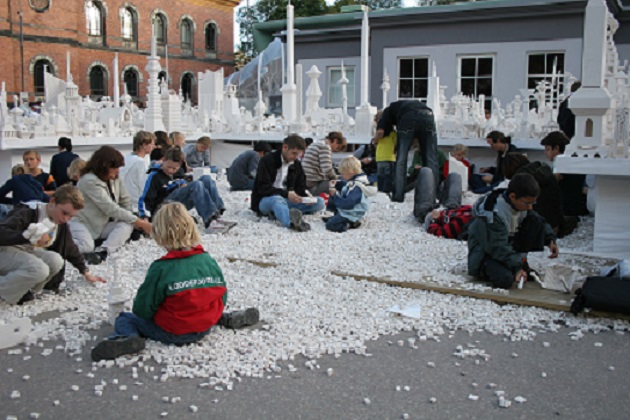Applied Art: Innovative Thinking From a Material Perspective
DOI:
https://doi.org/10.7577/if.v2i2.732Abstract
The modern world is continuously engaged in a racing processes aimed towards building a favourable future society. In this development, the apparent tools seem to be related to theoretical thought, new technology, avant-garde approaches and innovation. The bodily focus and the societal micro level processes are often left behind in this race. Though, in our aspiration towards urban development and the future society, we should not forget that the bodily functions and the possibilities that these give, represent one of the most fundamental and basic tools we have. This article would like to form an argument carrying out the seeming advantage of bringing in not just technological and theoretic avant-garde to the term of innovation and development, but to invite the whole body into the forming of the future, thereby seeing the term innovation from a material perspective. As the art field today is more often approaching subject matters that are primarily societal, we would like to introduce the potential of a mutual approach from the other end, seeing the art field as a central part in the creation of engagement and progress that can instigate another form of efficiency and present an expanded understanding of what innovative activity can be, and how it can be perceived and comprehended. We would like to debate an art form that takes the bodily, active and relational focus and its social context as a base and starting point on the road towards societal consciousness and potential development. Looking at the example of the art project «The Collectivity Project», this article takes it’s starting point in the following question;
How can applied art projects in connection to social contexts, like The Collectivity Project, show the art field and the bodily sensuousness as a tool in the forming of values pointing towards an alternative way of thinking societal consciousness and development?

Downloads
Published
How to Cite
Issue
Section
License
Authors who publish with this journal agree to the following terms:
- Authors retain copyright and grant the journal right of first publication with the work simultaneously licensed under a Creative Commons Attribution License that allows others to share the work with an acknowledgement of the work's authorship and initial publication in this journal.
- Authors are able to enter into separate, additional contractual arrangements for the non-exclusive distribution of the journal's published version of the work (e.g., post it to an institutional repository or publish it in a book), with an acknowledgement of its initial publication in this journal.
- Authors are permitted and encouraged to post their work online (e.g., in institutional repositories or on their website) prior to and during the submission process, as it can lead to productive exchanges, as well as earlier and greater citation of published work (See The Effect of Open Access).